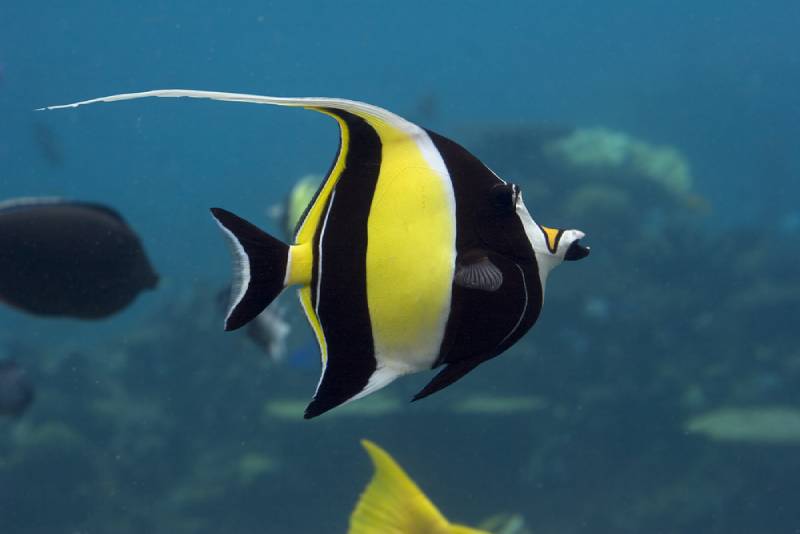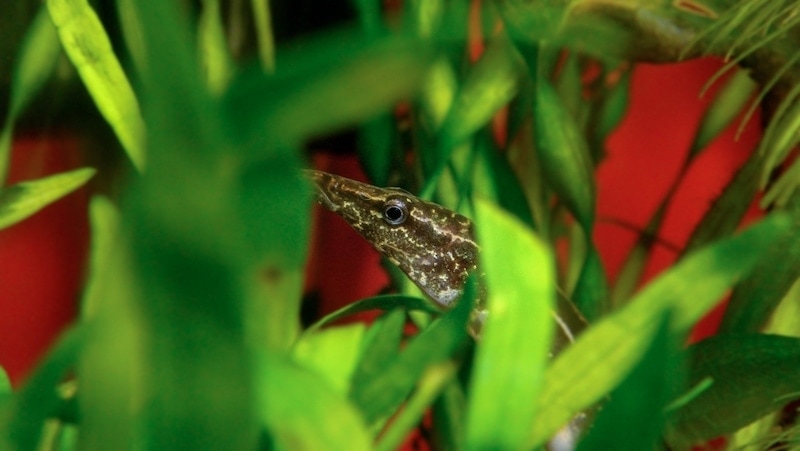What Kind of Fish Is Gill From Finding Nemo? Movie Fish Explained
Updated on

Finding Nemo is a 2003 animated film that, although intended for kids, became loved by adults. It introduced the viewers to the wonders of the undersea world. The movie revolves around a juvenile clownfish called Nemo who gets separated from his father and tries to find him. The beautifully created movie contains a stunning array of brightly colored ocean-dwelling characters encountered during Nemo’s grand adventure.
One of these characters is a fish called Gill, who is the leader of the “Tank Gang.” “Tank” refers to the fish tank where Nemo finds himself after being captured by scuba divers. Gill is a Moorish idol fish.
What Is A Moorish Idol Fish?
The Moorish idol, Zanclus cornutus, is a tropical and sub-tropical reef fish belonging to the family Zanclidae. It is closely related to the surgeonfish or tang, as it is also called, having once thought to belong to the same family. It is a benthopelagic fish commonly occurring in shallow waters of coral and rocky reefs throughout the Indian Ocean and the Red Sea. It has been recorded at depths of up to 597 feet.
It is a strikingly beautiful fish about 7 to 8 inches long with three vertical thick black stripes on a yellowy-white background and a pursed, beak-like mouth. It is taller than it is long, and it has a thin, trailing white dorsal fin. Undoubtedly, it is one of the more eye-catching fish on the reef.
They are omnivorous fish that feed on sponges, coral, algae, tunicates, and other marine benthic invertebrates.

Other Fish Similar To a Moorish Idol
The Moorish idol may easily be confused with the pennant coralfish and schooling bannerfish (also known as the false Moorish idol). All three fish sport bold vertical black stripes on yellowy-white backgrounds, similar deep body shapes, and a trailing white dorsal fin. The Moorish idol is, however, distinguishable upon closer inspection by its distinctive orange snout saddle and black tail.
The butterflyfish and angelfish might also be mistaken for a Moorish idol in passing or by the less practiced eye since they have similar shapes. However, these two species of fish are quite dissimilar in other regards, and given sufficient examination time, their differences become readily apparent.
Is a Moorish Idol Suitable For a Home Aquarium?
In short, no. The Moorish idol has a care level rating of “expert,” and it is exceptionally difficult to keep in an aquarium. Many experts have conceded defeat and will not keep one in their tanks. There are several reasons for this, the first of which is that they are picky eaters.
They either eat everything in sight or they stop eating altogether. Once they stop eating, they usually never eat again and soon die. A second reason is that they are intolerant of very slight changes in the tank water environment, such as changes in temperature and salt and mineral levels. These changes are so subtle that they would be easily tolerated in their natural habitat, but for some reason, they cannot tolerate them in captivity.
An aquarium success rate of survival for this species has been documented as one in seven; from a purely ethical standpoint, this is unacceptable. The conscientious expert recommendation is that these fish should not be kept in aquariums.
Where Can I See a Moorish Idol In Real Life?
The best place to see one of these stunning fish is their natural habitat. This would require you to get wet, probably on an exotic beach vacation! You don’t need to be a qualified scuba diver to explore the fish’s environment, as there are many destinations where you can see them while snorkeling. Moorish Idols are seen regularly at Hawaiian snorkeling sites.
Even though they are notoriously difficult to keep in aquariums, there’s a good chance you could find one in such an environment to view. Needing to see a Moorish idol seems like an excellent excuse to book that long-awaited and much-desired Hawaiian getaway!
What Other Fish Are in Finding Nemo?
Finding Nemo contains a host of entertaining aquatic creatures. Here are some of the more memorable characters encountered in the film.
Nemo and Marlin
Nemo is the lead character. He and his father, Marlin, are common clownfish, which are small fish native to the tropical waters of the Indo-Pacific. They form a mutualistic relationship with sea anemones.
Mr Ray
Nemo’s school teacher is a spotted eagle ray named Mr. Ray. Spotted eagle rays are stunning cartilaginous fish that seemingly fly through the water of tropical oceans with their “wings.” They can reach a length of 16.4 feet, and their conservation status is “near threatened.”
Dory
Dory features prominently and hilariously in Nemo’s adventure as Marlin’s forgetful sidekick. Dory is a blue tang, which is a native Indo-Pacific tropical fish that can reach 10 to 12 inches in length and weigh around a pound.
Bubbles
Bubbles is a yellow tang that is a member of the “Tank Gang” led by Gill. The yellow tang does not resemble the blue tang at all. As the name suggests, this reef-dwelling fish is yellow and can reach lengths of around 7 inches.
Bloat
As another member of the “Tank Gang,” Bloat is a short-tempered puffer fish. Almost all puffer fish are poisonous to the touch because they harbor a toxin called tetrodotoxin on their skin. They should never be touched.
There are so many more fun and beautiful fish in the movie, and we may not have mentioned your favorite here, but these are some of ours.
Final Thoughts
We love the larger-than-life “Tank Gang” leader, Gill, from “Finding Nemo,” but in reality, the stunning Moorish idol is a tropical fish best left in the ocean for now. Perhaps when there are further advances in the science of saltwater aquariums, it may be possible to keep Moorish idols successfully. As things stand currently, the best and most ethical place for these fish to be kept is in their natural environment.
Featured Image Credit: Ian Scott, Shutterstock












